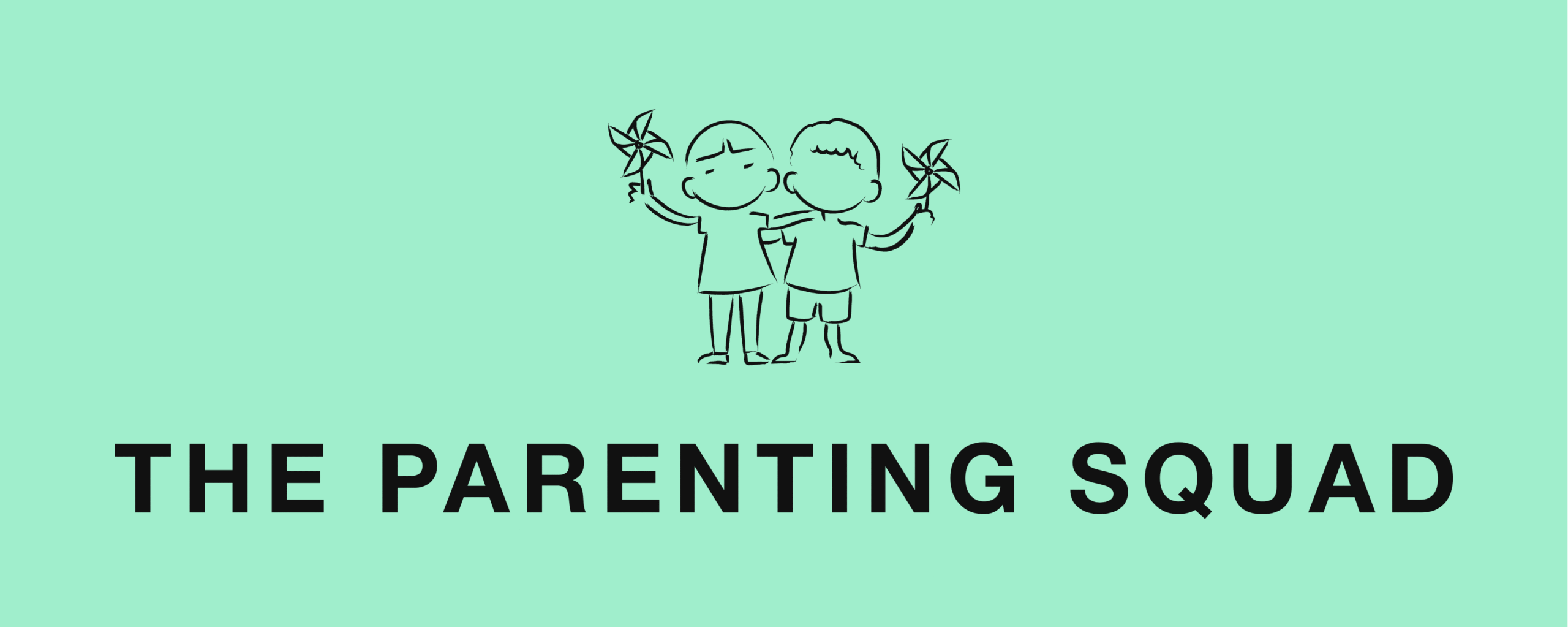Are They Just in a Phase? Recognizing Developmental Problems in Adolescence
Parenting a teenager is like trying to solve a puzzle that’s constantly changing. One day they’re talking about their friends over breakfast, and the next they’re locked in their room with music blasting. Sound familiar?
Most of the time, these dramatic changes are normal—just your teen’s brain rewiring itself. But sometimes what looks like typical teenage behavior might need your attention. The hard part is figuring out when to worry and stock up on patience (and maybe some noise-canceling headphones).
This guide will help you distinguish between normal growing pains and potential red flags that might indicate deeper developmental challenges. You’ll learn what to look out for, how to start tough conversations without getting the eye roll, and when to bring backup.
Adolescence can significantly impact a person’s life, well-being, and future outcomes through the experiences and development during this period.
What’s “Normal” in the Teenage Years
Let’s get honest about typical adolescence before we get into the warning signs. Spoiler alert: it’s messy, unpredictable, and sometimes makes you question your sanity.
During the teenage years, your child’s brain is literally under construction. Significant biological, cognitive, and emotional changes happen during adolescence as part of normal development. The prefrontal cortex—the part of the brain responsible for decision making and impulse control—won’t fully develop until their mid-twenties. That’s why your otherwise intelligent teen might think staying up till 3 am before a big test is a genius idea.
Typical teenage behavior includes mood swings that could rival a soap opera, pushing boundaries (because testing limits is their job), growing independence that feels like rejection, and seeking approval from peers over parents (because their opinion on their outfit suddenly matters less than their best friend’s).
Here’s the thing, though: according to recent research, about 1 in 5 teens experience a mental health challenge that goes beyond typical adolescent struggles. That’s why learning to recognize when behavior crosses from “challenging but normal” into “needs support” territory.
Physical Changes and Brain Development
Adolescence is a time of massive emotional, physical, and neurologic change. As your child grows, you’ll see a series of changes that signal the start of puberty. These include the development of secondary sex characteristics like pubic hair, body odor, and, yes, the occasional breakout of acne. For most girls, these changes start between 10 and 14, and for boys, a bit later, between 12 and 16. These physical changes can feel sudden and overwhelming for adolescents and their families.
But it’s not just skin deep. Underneath it all, your teen’s brain is undergoing a significant renovation. Brain development during adolescence is a dynamic process with the brain continuing to mature and refine its connections well into the mid-twenties. This is the stage of significant cognitive development—think improved problem-solving skills, better impulse control, and the ability to think about the future. However, this is also the stage when risk-taking behaviors can peak, influenced by peer pressure, stress, and anxiety. It’s not uncommon for young people to test boundaries as their brains learn to balance excitement with caution.
Supporting healthy adolescent development means more than just keeping an eye on grades or moods. It’s about creating an environment where your child can thrive physically, emotionally, and intellectually. Regular physical activity, balanced nutrition, and plenty of sleep are the building blocks for healthy growth and brain development. Encourage your teen to engage in activities that challenge their mind—reading, puzzles, or learning new skills can all help strengthen cognitive abilities and problem-solving.
Some adolescents face additional challenges due to risk factors like premature birth, low birth weight, or exposure to lead, which can increase the risk of developmental disabilities or delays. Early detection of developmental concerns like autism spectrum disorder or intellectual disability is crucial. If you notice your child struggling with milestones or behaviors that seem out of step with other children their age, don’t hesitate to seek guidance from healthcare providers.
Early intervention, including physical therapy or specialized educational support, can significantly affect a child’s development and well-being. Remember, adolescent development doesn’t happen in isolation. Family dynamics, social expectations, and cultural values shape your child’s growth. As your teenager moves towards young adulthood, your support, encouragement, and open communication will help them develop the skills and confidence to make informed decisions about their health, education, and future.
By working together—parents, caregivers, educators, and healthcare providers—we can help young people navigate the challenges of adolescence and emerge as healthy, capable, and resilient adults. After all, supporting your child’s development is more than just getting through the teenage years; it’s about empowering them to live fulfilling lives and positively contribute to their communities.
Developmental Challenges and Warning Signs
Let’s break down the most common red flags by category so you know what to look for:
Developmental milestones are reached at different rates for each adolescent, so it’s important to understand that physical, emotional, and cognitive changes can vary widely. Recognizing this variability helps when assessing potential concerns.
Depression and Anxiety
Teen depression doesn’t always look like the sad, withdrawn image we might picture. Sometimes it shows up as:
- Persistent irritability or anger that lasts for weeks
- Loss of interest in activities they used to love (suddenly quitting sports, avoiding friends)
- Significant changes in sleep patterns—either sleeping all the time or barely sleeping
- Physical complaints like frequent headaches or stomachaches with no apparent cause
- Feelings of worthlessness or excessive guilt over small things
Anxiety in teens might present as constant worry about grades, social situations, or the future, along with physical symptoms like a racing heart or difficulty concentrating. Anxiety disorders are one of the most common emotional health issues in adolescence, often impacting academic and social functioning.
Eating Disorders
These can be particularly sneaky because they often start as seemingly healthy behaviors:
- Dramatic weight loss or gain in a short period
- Obsessive calorie counting or reading nutrition labels
- Avoiding family meals or making excuses not to eat with others
- Excessive exercise that becomes rigid or compulsive
- Preoccupation with body image or frequent negative comments about their appearance
Eating disorders can sometimes co-occur with other risk behaviors like substance use, which may further complicate an adolescent’s mental health.
Academic Decline
While grades naturally fluctuate, watch for:
- A sudden, significant drop in performance across multiple subjects* Teachers are reporting missed assignments, sleeping in class, or behavioral changes
- Your teen is expressing feelings of being overwhelmed by schoolwork that used to be manageable
- Avoiding school or frequently asking to stay home
Social Isolation
This goes beyond typical teenage privacy needs:
- Completely withdrawing from friends and family activities
- Spending most of their time alone in their room
- No longer participating in activities or hobbies they once enjoyed
- Seeming to have lost their entire friend group without explanation
Risky Behaviors
Some experimentation is normal, but concerning signs include:
Certain biological and social changes during adolescence can lead to an increased risk of engaging in risky behaviors, including acting impulsively due to ongoing brain development.
- Regular use of alcohol, drugs, or vaping
- Engaging in dangerous activities without considering consequences
- Significant changes in friend groups, especially towards peers who engage in risky behaviors
- Legal troubles or repeatedly breaking family rules with no remorse
Early Intervention
Here’s the good news: catching these issues early can make a big difference. When parents intervene at the first sign of trouble, teens are more likely to develop healthy coping strategies and bounce back faster. Early intervention is key to supporting a child’s development and addressing any concerns about developmental delays.
Think of it like treating a sprained ankle. It heals well if you address it immediately with rest and proper care. You’ll recover much longer if you ignore it and keep running on it. Paying attention to a child’s experiences and milestones can help parents and professionals identify potential issues early.
Early intervention doesn’t always mean therapy or medication (though sometimes it does). It might be as simple as having regular check-ins, connecting with school counselors, or adjusting family routines to provide more support. Monitoring a child’s progress and seeking help if there are signs of developmental delays is essential for supporting the child’s overall well-being.
Starting the Conversation
Talking to your teen about concerning behaviors requires some finesse. The goal is to open dialogue, not trigger their defensive shields. Start with specific observation, not general concerns. Instead of “You’ve been acting weird lately,” try “I’ve noticed you haven’t been hanging out with Jake and Maria much lately. Is everything okay?”
Create opportunities for casual conversation—car rides, cooking together, or walking the dog work great. Many teens find talking easier when they’re not making direct eye contact.
Here’s a script that often works: “I’ve noticed [specific change in behavior]. I’m not trying to pry, but I care about you and want to ensure you’re okay. Is there anything you’d like to talk about?”
The key is to listen without immediately jumping into problem-solving mode. Sometimes teens need to feel heard before they accept help.
When and Where to Get Help
Trust your parental instincts. If concerning behaviors persist over a few weeks, interfere with daily functioning, or make you feel out of your depth, it’s time for professional guidance.
Start with your teen’s pediatrician, who can rule out medical causes and provide referrals. School counselors are also a great resource and can offer insights into your teen’s behavior in the academic setting.
For mental health support, look for therapists who specialize in adolescents. Many teens respond well to cognitive-behavioral therapy (CBT) or family therapy approaches. Some health conditions may require ongoing support as teens transition into young adults; specialized care can help address these unique needs.
If you’re dealing with an immediate crisis—like threats of self-harm, substance abuse emergencies, or serious safety concerns—don’t hesitate to contact:
- National Suicide Prevention Lifeline: 988
- Crisis Text Line: Text HOME to 741741
- Your local emergency services: 911
Remember, seeking help isn’t admitting failure as a parent—it’s showing your teen that their well-being matters enough to seek expert support.
Moving Forward with Confidence
Parenting teens means accepting that you can’t control everything, but can stay connected and aware. Adolescence is a critical period for developing social, emotional, and cognitive skills that shape a person’s future. The teenage years are temporary (even when they feel eternal), and most teens navigate this period successfully with supportive families behind them. Start by having regular family check-ins—maybe during a weekly pizza night or Sunday breakfast.
Create an environment where your teen knows they can come to you with problems without facing immediate judgment or punishment. Transitioning from childhood through adolescence to early adulthood involves navigating complex social expectations, including gender norms, and understanding one’s place in the world.
Pay attention to changes in your teen’s mood, behavior, sleep patterns, and social connections. Older adolescents and those in late adolescence may face unique challenges as they prepare for early adulthood, and supporting their individual capacity for decision-making and self-regulation is key. Trust your instincts when something feels off, but remember that some upheaval is part of the normal teenage experience.
Most importantly, remember you’re not alone in this journey. The risks and opportunities of adolescence are influenced by early childhood experiences, ongoing development, and the world in which young people grow up. The Parenting Squad community is full of parents navigating similar challenges, sharing what works (and what doesn’t) and offering support when needed.
Be part of The Parenting Squad’s community for ongoing advice, support, and those “me too” moments that remind you that you’re doing better than you think. Because sometimes the best parenting advice comes from other parents who’ve been exactly where you are now.







